Last Updated on July 9, 2025 by Tanya Janse van Rensburg
A Classic English kitchen has a unique charm—timeless, functional, and steeped in quiet elegance.
Whether you’re working with an older home or dreaming of adding traditional character to a modern space, the appeal lies in thoughtful craftsmanship, heritage-inspired details, and a sense of calm permanence.
At SampleBoard, we’ve long admired the craftsmanship and timeless appeal of deVOL Kitchens—and their latest project in Blackheath is no exception.
The Blackheath Kitchen, a beautifully restored Georgian townhouse featuring a moody and magnificent Classic English Kitchen by deVOL.
While this space is one-of-a-kind, its design principles offer endless inspiration for creating your own version of a traditional English kitchen.
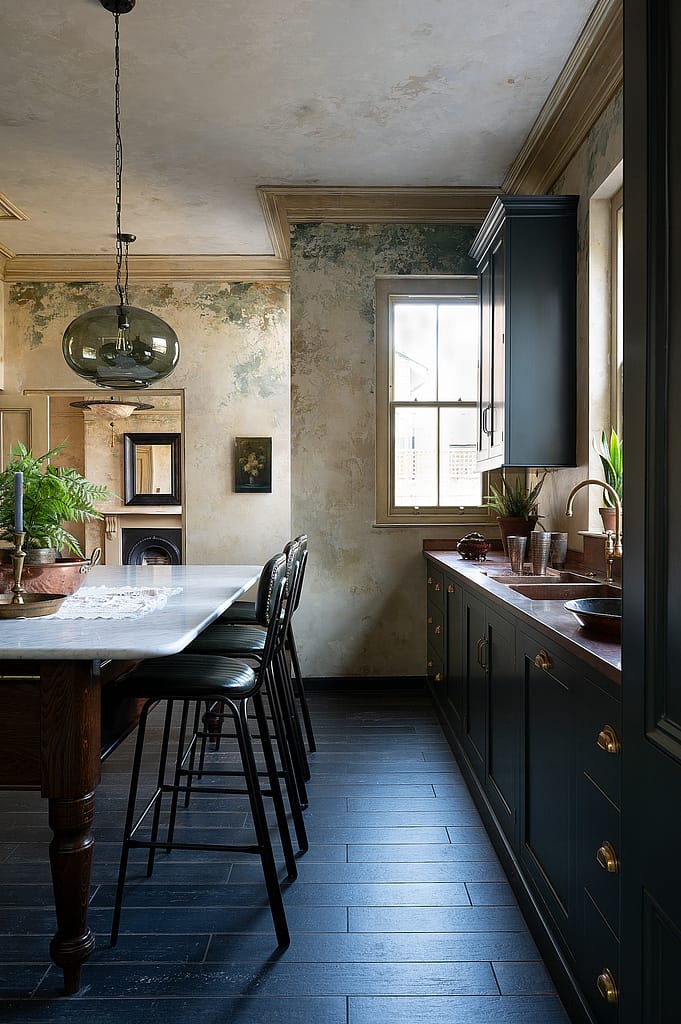
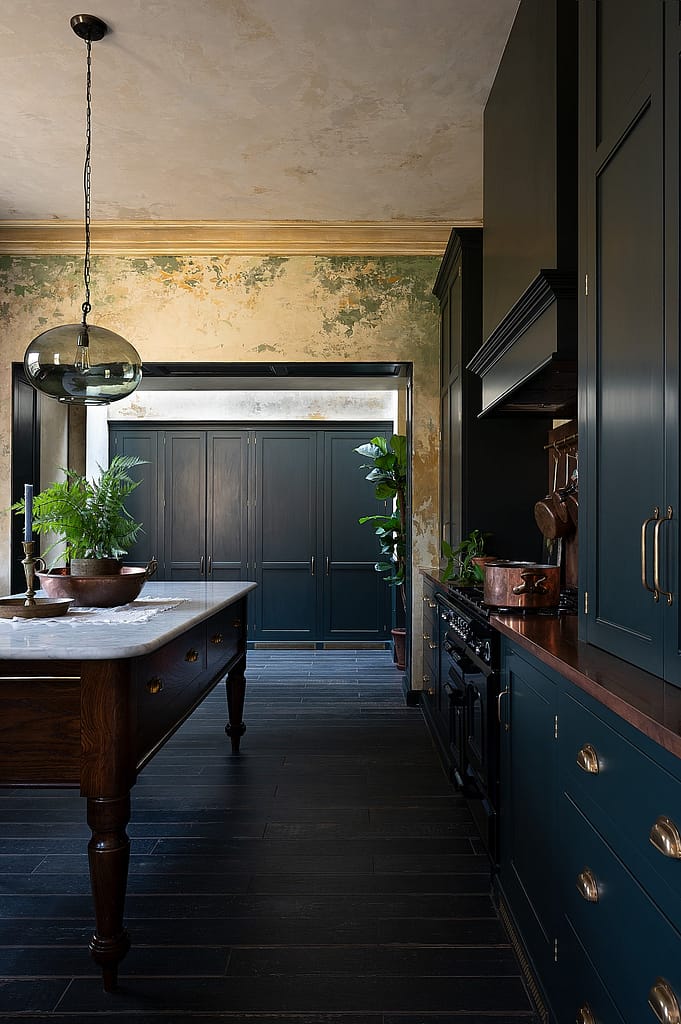
Located in the desirable Blackheath neighborhood, the home itself is a Georgian gem.
Over three years, the owners carefully renovated the house, uncovering and restoring its original architectural features—from tall sash windows and ornate moldings to generously proportioned rooms.
The kitchen had to match the grandeur of its setting while also functioning as a modern family space. The result is a beautifully balanced kitchen that honors the past but works perfectly for present-day living.

So, what defines a Classic English Kitchen? Think freestanding furniture, quality materials, a muted or moody color palette, and an overall sense of restraint and timelessness.
Here are some of the core elements to consider:
Classic English kitchens often feel like a collection of beautiful furniture pieces rather than a uniform row of cabinets.
In the Blackheath Kitchen, elements like the larder cupboard, range cooker housing, and central island all stand apart, offering flexibility and a sense of evolution over time.
Tip: Use a mix of fitted and freestanding units to avoid a “too perfect” look. A freestanding hutch or open shelves can add instant personality.
The Blackheath Kitchen boldly embraces darker tones, a move that pays off dramatically.
The cabinetry is painted in a deep, inky shade, which contrasts beautifully with pale walls and natural light pouring through tall Georgian windows.
Tip: Consider colors like charcoal, navy, forest green, or even black for cabinetry. Pair with antique brass or aged bronze hardware for warmth.
Traditional kitchens use materials that age beautifully. In Blackheath, you’ll find marble countertops, rustic timber accents, and brass fixtures that gain character over time.
Tip: Choose unlacquered brass, aged wood, honed stone, or handmade tiles to add authenticity. These finishes improve with use, adding to the kitchen’s lived-in feel.
The deep ceramic Butler sink is a staple of English kitchen design, paired with bridge or pillar faucets in aged metals. This combination brings utility and charm together perfectly.
Tip: Install a traditional farmhouse sink and a vintage-style faucet with crosshead handles to echo classic proportions.
Instead of hiding everything behind closed doors, these kitchens embrace open shelves, plate racks, and hanging rails.
In the Blackheath Kitchen, everyday items are displayed with intention—creating visual interest and a sense of home.
Tip: Use open shelving to display your most-used items. Group glassware, cookbooks, ceramics, and even herbs for a look that’s both styled and practical.
Lighting in a classic kitchen should feel timeless but impactful. Think antique-style pendants, sconces, or industrial fixtures that anchor the space.
Tip: Use layered lighting—task lights over the island, ambient sconces around the room, and statement pendants to add visual drama.
Perhaps the most important takeaway from the Blackheath project is how the kitchen respects the home’s original character. Rather than imposing a modern aesthetic, the design enhances what’s already there.
Tip: Work with your home’s bones—highlight high ceilings, original floors, or period windows. Even in a newer home, you can add architectural character through paneling, cornices, or traditional flooring.
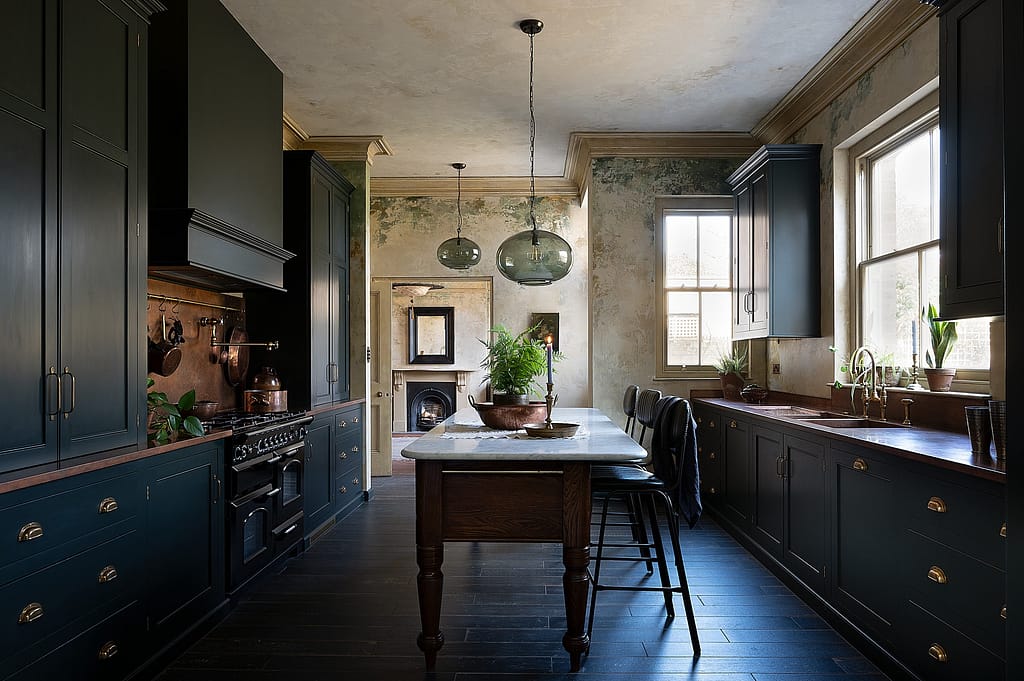

While Classic English Kitchens are rooted in history, they are anything but old-fashioned.
Today’s designs embrace modern functionality—from integrated appliances and soft-close drawers to sustainable finishes and smart layouts.
The Blackheath Kitchen shows how you can blend old and new without compromising on either.
Tip: Hide modern appliances behind cabinetry, and prioritize smart storage solutions inside your classic-looking cupboards to marry style with practicality.
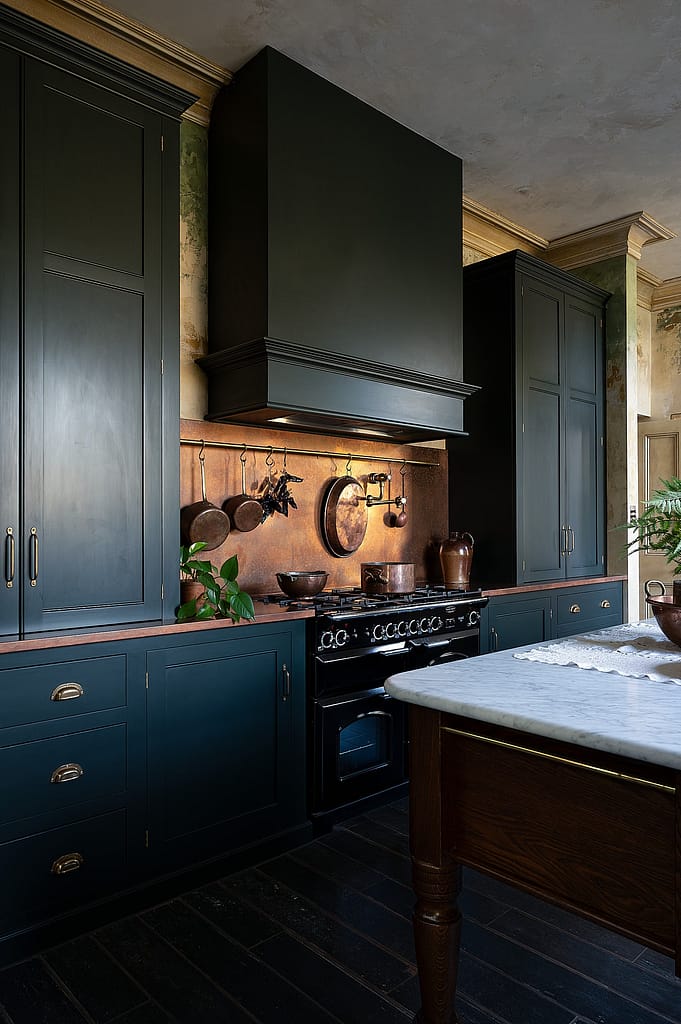
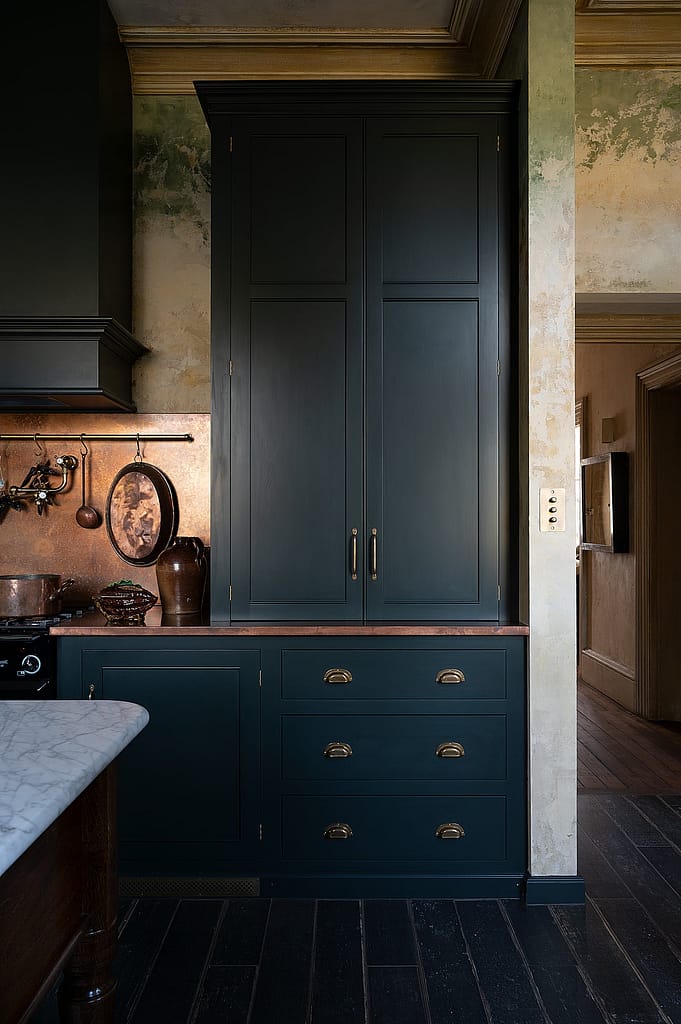
Feeling inspired to create your own version of this timeless look?
Here’s a simple checklist to begin:
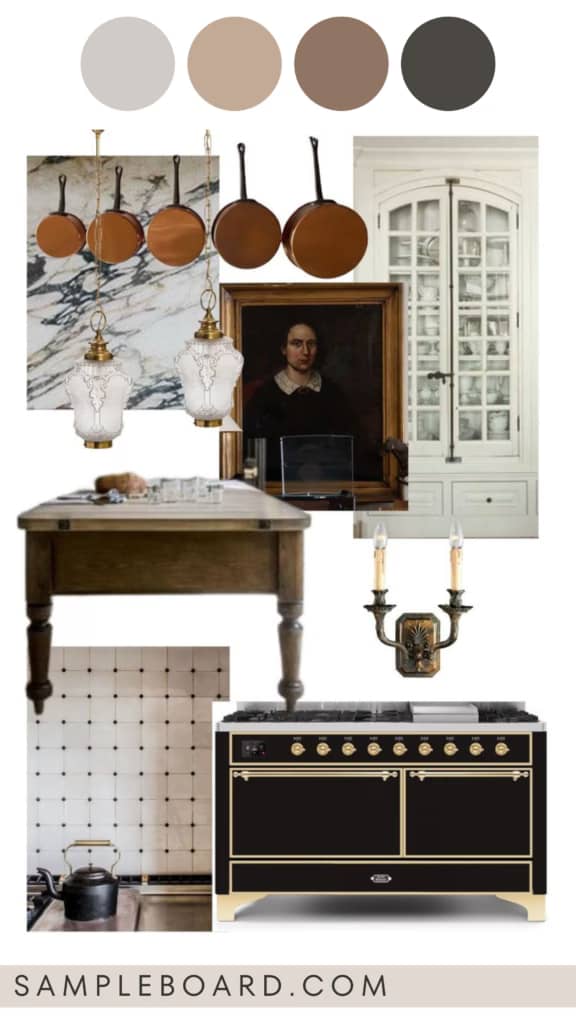




The Blackheath Kitchen is more than just a beautiful design project—it’s a reminder that kitchens can tell stories.
By drawing from the past and incorporating thoughtful details, this space offers warmth, elegance, and everyday functionality.
Whether you’re renovating an old home or building a new one, you don’t need to recreate this kitchen exactly to be inspired by it.
Instead, take its spirit—the moody tones, the honest materials, and the respect for tradition—and bring it into your own space.
For a closer look at this stunning kitchen, explore the full Blackheath Kitchen project by deVOL, a brand that continues to celebrate the beauty of timeless English design.